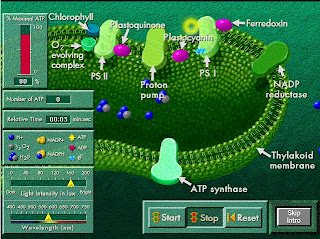The focus of my evolution as a teacher is on the shifting of ownership. After all, who is supposed to own the learning?
I am in the process of evolving from having a teacher-centered classroom where I am the provider of knowledge and the designer of assessments to focusing on developing and supporting my students learning autonomy. I strive for a learner-centered environment where students actively participate to construct their knowledge and reflect on their learning process.
As part of my teaching evolutionary process I have taken some elements to focus on each year. Last year I focused on ways to engage my students through connections. You can read my blog posting here: Engage = Connect.
 Focus: Assessments
Focus: AssessmentsFor this school year, my evolution focuses on assessments.
What is the objective of assessments?
Is it how well my students can regurgitate facts or how well they can find the “formula” to solve a problem? What if the day before an assessment a student had a cello recital to prepare for or they had a basketball game and arrived home not until 10:00 pm? How can a grade on a quiz or a test reflect their best?
The word assessment has a Latin root: assidere. It means to sit beside. In an educational context, the process of observing learning; describing, collecting, recording, scoring, and interpreting information about a student's or one's own learning.
I see assessment as an ongoing process that informs me and my students and gauges the learning progression. I partner with my students to facilitate their learning and they appreciate not being constrained by fixed deadlines and
dead-end quiz scores as they have ample opportunities to demonstrate that “they can”
accomplish every single one of our Learning Objectives.
I like to offer a variety of authentic assessments in which
students are asked to perform real-world tasks that demonstrate meaningful
application of essential physics concepts and scientific skills.
The most important feature of authentic assessments is that they provide multiple paths to the students’ demonstration of their learning.
This is an example from our kinematics unit. The students were presented
with a Lab Practicum challenge:
‘At what position will two cars moving at different speeds collide
if they are released from opposite ends at different times? Cars are 2 meters
apart and one car is released 3 seconds after the first one.’
Instead of writing a traditional lab report, students created a video of their lab by engaging in a collaborative approach to the construction of knowledge. Take a look at one of the teams presenting their video as a TV show reporting on a train accident. The team used the experiment as a model to investigate the incident and demonstrated their understanding of kinematics through multiple representations of knowledge:
Trey's Project: If baseball was played on the moon, how far would a Ian Kinsler home run go?
Hannah's Project: How does my free-throw shot compare to Coach Schroeder's shot?
Dylan's Project: When the blue bird in Angry Birds splits into three, do the speeds change?
McKenna's Project: What's the initial velocity at which I was thrown in a cheerleader's cradle?
Hannah's Project: How does my free-throw shot compare to Coach Schroeder's shot?
Dylan's Project: When the blue bird in Angry Birds splits into three, do the speeds change?
McKenna's Project: What's the initial velocity at which I was thrown in a cheerleader's cradle?
Evaluation
At the end of the trimester I gave the class a thorough class evaluation. It was meant to help them look back into the first three months of class and think deeper about their learning.
Selected questions and student responses can be seen below:
So, where are you in your evolution as a teacher?
Credits:
Credits:
Image Creative Commons license by toolstop
Ideas:
Thank you to Kelly O'Shea and John Burke for inspiration in creating the evaluation questions.





































